This site is made possible by its sponsors.
Please visit them!
goal - The purpose toward which an endeavor is directed. Educational research supports the reasonable idea that students will move toward goals when they know what the goals are. The goals should be fairly specific. Behavioral objectives are effective in this respect. They should also be challenging without being too difficult, and communicated as expectations for the results of learning. When planning curriculum, units, and daily lessons, an educator should do so with a focus not on what he/she is going to cover, but on students meeting standards — on what students should be able to do when instruction is complete.
Some strategies for educators:
Also see art criticism, Bloom's Taxonomy, critique, effort, enthusiasm, evaluation, interesting, motivation, positive reinforcement, praise, readiness, and success.
Goldberg - See Rube Goldberg.
goo - A creamy paste of cement mixed with water. Goo is the first coat applied to a mold in making a hollow cast concrete sculpture, and forms an even surface layer for the finished cast. Goo is also a brand name for a certain hand cleaning product.
Also see investment.
gopuram - In architecture, the massive ornamental entrance structure of South Indian temples.
(pr. GOH-poo-rəm)
Example:
![]()

![]()
India, Kanchipuram, Eastern Gopuram of Sri Varadharaja Perumal
Temple, nine stories.

Indian,
Mysore, Karnataka, Gopuram
of City Palace, six stories.
![]()
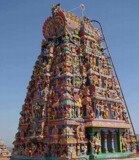
![]()
India, Palani Malai Kovil, Raja Gopuram.
Also see Hinduism.
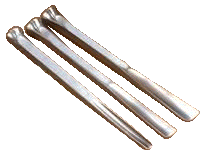
gouge - A beveled chisel with a rounded, troughlike cutting edge, generally for carving wood. There are numerous types of gouges, including a V-tool for engraving the surface of wood. Many gouges are designed to be pushed by hand rather than by the hit of a mallet. To gouge is to make a scooping or digging action, as with such a chisel. A typical gouge has an edge sharpened with a 10% bevel on both inside and outside edges.
Also see tools.
gradated wash - A wash that is light or thin in an area where little color has been applied, and gradually becomes darker or heavier into another area, where more color has been applied. A painting technique typically used with watercolors and inks, but possible with any thinned pigments.
Example:
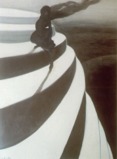
Leon Spilliaert (Belgian, 1881-1926), The Magic Staircase,
1908, wash, ink,
watercolor, 64 x 48 cm, Musee
des Beaux-arts, Ostend, Belgium. See Symbolism.
Also see gradation.
gradation - A gradual, smoothly nuanced, step-by-step change from dark to light values or from large to small shapes, or rough to smooth textures, or one color to another. As a principle of design, it refers to any way of combining elements of art by using a series of gradual changes in those elements. Gradation is unlike contrast which stresses sudden changes in elements.
Examples:


Maurits Cornelis Escher (Dutch, 1898-1972),
Untitled (Reducing Lizards tessellation).
Escher employed a step-by-step reduction in size
in the design
of this tessellation.
The
scheme Escher devised in order to produce
this tessellation.
Also see chiaroscuro, gradated wash, gray scale, infrared reflectography (IR) and reflectogram, metamorphosis, modeling, and shading.
gradina - Italian for a claw chisel.
graffiti - A drawing or an inscription made on a wall or other surface, usually so as to be seen by the public, and also called "Spraycan art" and "Subway art" at its height in the 1980s. Although it is sometimes mistaken for (or actually is) vandalism — a defacing of public or private property — and illegal; it may also be regarded as a form of art. Among the most highly respected of artists whose work emerged from graffiti are Keith Haring (American, 1958-1990) and Jean-Michel Basquiat (American, 1960-1988).
The medium graffiti painters often employ because of their portability and built-in applicators are aerosol cans of paint. Graffiti painters have coined a number of their own terms. Their works are often called "tags" probably because they so often produce images of their names, also known as tags. Their painting is called "tagging." Tags that are small and simple are "bombs." Common sites are walls, roofs, train cars, and other vehicles. These surfaces are sometimes described as painted on "panels."
(pr. grə-FEE-TEE)
Examples:

Keith Haring (American, 1958-1990), Crawling
Baby on Dumpster, 1982. There's more on the dumpster's contents.
Jean-Michel Basquiat (American, 1960-1988).

King157,
This is Real Graffiti,
c. 1999, San Jose, California.
Bysk and Topek, tag on a billboard for Shea Homes, c. 2000, Phoenix, AZ.
Related resources:
Also see bad art, destruction, letterform, and popular culture.
graffito - Sgraffito, a method in which a line is produced by scratching through one pigmented surface to reveal another.
gram - A unit of weight measurement equal to 0.001 kilogram. To convert grams into ounces (US), multiply them by 0.03527. Abbreviated g.
-gram - A suffix (word ending) referring to something written, drawn or recorded, such as an anagram, chronogram, diagram, epigram, hexagram, hologram, ideogram, lipogram, logogram, monogram, pentagram, pictogram, program, and telegram. Decagram and kilogram are units of weight measurement in the metric system devived from the gram.
granite - A hard, coarse-grained igneous rock largely consisting of mica, and quartz. It has been used for sculpture, monuments, and architecture by several civilization. The name granite is sometimes used loosely to include related igneous rocks such as granodiorite.
Examples of works in granite:

Russia,
Lake Onega, Carved
Petroglyph (fragment),
4th-3rd millenium BCE,
granite, 240 x 308 cm, Hermitage Museum, St. Petersburg, Russia.
See petroglyph and Stone Age.

Egypt,
Country of Origin Western Thebes, Seated Statue of Hatshepsut, c. 1503-1482
BCE,
Dynasty 18, reign of Hatshepsut and Tuthmosis III, New Kingdom,
red granite, height 65 3/4
inches (167 cm), Metropolitan Museum of Art, NY.
![]()
South India, Tamil Nadu, Chola dynasty, Brahma, 10th century, granite with traces
of gesso and red pigment,
Worcester Art Museum, MA. See Hindu
art.
Gutson Borglum (American, 1867-1941), assisted by a workforce of 400, including hard-rock miners, ranchers, hobos, and unemployed laborers, Mount Rushmore National Monument, took 14 years, completed Oct. 31, 1941, dynamited and jackhammered pegmatitic granite, height of each face c. 60 feet, each nose 20 feet, width each eye 11 feet, the Black Hills in southwestern South Dakota. Cost nearly $1 million, 85% paid by the federal government. Visitors in 2000: 2,522,288. See living rock and monument.
Also see statue.
granulate - A material which is rough and grainy. Or, to make a material rough and grainy. (pr. GRAN-yə-LAYT)
Also see abrasive, matting tools, rugosity, sand, and texture.

graph - A diagram that exhibits a relationship, often functional, between two sets of numbers as a set of points having coordinates determined by the relationship. Also called a chart or plot. Pictorial types of graphs include the pie chart and the bar graph, often used to express the relationships between quantities, volumes, degrees, etc.
Examples of various kinds of graphs:
![]()

![]()
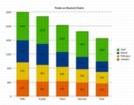
bar graphs
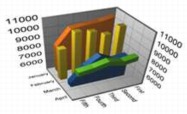
3-D mixed
risers
![]()
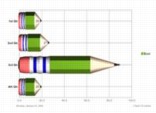
![]()
bar - pictograph
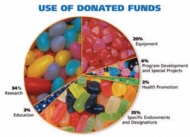
![]()
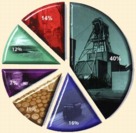
pie charts
Related resource:
Also see didactic, -graph, grid, map, plan, proportion, ratio, lattice, and science and art.
-graph - A suffix (word ending) referring to something written, drawn or recorded (such as a collagraph, collograph, holograph (not to be confused with hologram), monograph, photograph, pictograph) or an instrument for writing, drawing, recording, or playing a recording (such as phonograph and seismograph). A person who writes about a specific subject might be a biographer, a geographer, etc. Penmanship is chirography. The Oxford English Dictionary says a hurrygraph is a "jocular nonce-word" meaning hurried sketch.
graphic - Any image that is especially linear in character, such as a drawing, and any image made by or for printmaking or digital imaging.
Also see -graph, graphic arts, and graphic design.
graphic artist - A person who makes drawings or fine prints, such as block prints, bookplates, intaglio prints, lithographs, and serigraphs.
Also see graphic, graphic arts, graphic designer, and illustrator.
graphic arts - Visual arts that are linear in character, such as drawing and engraving, and other forms of printmaking, such as lithography and serigraphy.

GraphicConverter - A shareware application for Macintosh platform computers that converts digital images of any format (e.g. GIF, JPEG, PICT, TIFF, etc.) to another format. It also contains many useful features for picture manipulation. Download GraphicConverter from the producer, LemkeSoft.com.
graphic designer - Among people in art careers, a person who designs for commercial purposes, such things as logos, letterheads, packages, advertisements, signage, books, Web pages, and other publications. Many graphic artists and designers are freelancers.
Related resources:
Also see graphic, illustrator, and typography.
![]()
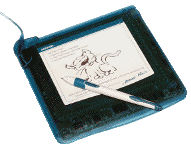
![]()
graphics tablet - A device by which pictorial information is entered into a computer in a manner similar to drawing, using a stylus. Also see digital imaging and graphic design.
graphite - A soft black mineral substance, a form of carbon, available in powder, stick, and other forms. It has a metallic luster and a greasy feel. Compressed with fine clay, it is used in lead pencils (though contemporary lead pencils contain no lead), lubricants, paints, and coatings, among other products. Also called black lead and plumbago.
Examples of works made with graphite:

Jean-Auguste-Dominique Ingres (French, 1780-1867),
commissioned by Prince Wenzel von Kaunitz-Rietberg (Austrian
Ambassador to Rome in 1818), The Kaunitz Sisters (Leopoldine, Caroline,
and Ferdinandine, Austrians), 1818, graphite, 11 7/8 x 8 3/4
inches (30.1 x 22.2 cm), Metropolitan Museum of Art, NY. See
Neoclassicism.
Gustave Courbet (French, 1819-1877), Portrait of Juliette Courbet as a Sleeping Child, 1841, graphite on paper, Musée d'Orsay. See Realism.
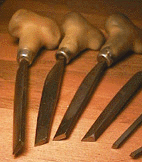
graver - A tool used in engraving metal, wood, or stone. A knob-like wooden handle which holds a metal shaft having a sharp beveled point with one size of several possible shapes, either flat, round, multiple, or elliptical. It is generally designed to be pushed by the hand, although there is an electrical tool often called a graver, which has a rotating tip. Another name for graver is burin. Graver may also refer to the technique or style of an engraver's work. (pr. GRAY-vr) See block printing, burin, gravure, woodcut, and wood engraving.
gravure - French for engraving. There are several types of engraving, including copper-plate and wood engraving, rotogravure and photogravure. In English, gravure has been used broadly to cover any or all of these several types. In the nineteenth and twentieth centuries, prints have been referred to as "art gravures" in order to distinguish them as art prints, rather than as merely commercial-grade prints. The line drawn between the two is a relatively subjective one. Seeing this term ON a print should raise suspicion that it is part of a huge edition, and/or for a relatively mass audience. (pr. grə-VYOOR)
gray scale - The range of neutral values, or shades of gray in an image. The gray scales of scanners and terminals are determined by the number of grays, or steps between black and white, that they can recognize and reproduce.
Below: a gray scale — or value scale — employing a smooth gradation of values.
Below: a gray scale in eight stepped grades of values.
![]()
Below: another gray scale in which stepped grades of values are labeled for their percentages of black, and values used to give planar shapes greater solidity and depth.

Internet resources concerned with gray scale:
Also see 2-bit image, 3-bit image, 4-bit image, chiaroscuro, dynamic range, gradation, and zone system.
![]()

Greek cross - A cross in which all the arms are the same length.
greeking - See lorem ipsum.
green earth - A particular green pigment.
Related resource:
greenstone - jade.
greenware - Generally refers to unfired pottery, although sometimes the term is used to specify Chinese stoneware with a high-fired green glaze. Also see bone dry and leather-hard.
green wood - Lumber that is not fully dried.
grid - A framework or pattern of criss-crossed or parallel lines. A lattice. When criss-crossed, lines are conventionally horizontal and vertical; and when lines are diagonal, they are usually at right angles to each other. Typically graph paper is a grid of lines. Things which are often gridded: tiles, tessellations, wire screens, chess boards, maps, graphs, charts, calendars, and modern street plans.
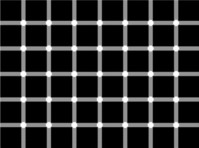
How many black dots can you find?
The difficulty encountered in seeing illusory
black dots results from afterimages.
This figure is known
as a "Hermann grid," named after its designer.
Examples of artworks in which grids are important:

Frank
Lloyd Wright (American, 1867-1959), Clerestory Window from Avery Coonley
Playhouse, Riverside, Illinois, 1912, colored and clear leaded
glass, 18 5/16
x 34 3/16 inches (46.5 x 86.8 cm). See architecture and stained glass.
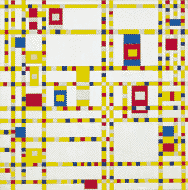
Piet
Mondrian (Dutch, 1872-1944), Broadway Boogie Woogie. 1942-43, oil on canvas,
50 x 50 inches (127 x 127 cm), at the Museum of Modern Art, New
York. See De Stijl.

Theo
van Doesburg (Dutch, 1883-1931), Counter-Composition VI, 1925, oil
on canvas, 50.0 x 50.0 cm,
Tate Gallery, London. See De
Stijl.
Jean-Pierre Raynaud (French, contemporary), Container zéro, 1988, created in place: steel, tiling, light, alarm sound, 330 x 330 x 330 cm, Centre Georges Pompidou, Paris.
Related resource:
Also see anamorphosis (where there's info on how to use grids to make interesting distortions), hatching, imbrication, moiré, tessellation, tile, and wove paper.
 grind
- To crush, pulverize, or reduce to powder by friction, especially
by rubbing between two hard surfaces.
Or, to shape or refine with
friction. [For grinding to occur, bumping is required.] (pr. gri:nd)
grind
- To crush, pulverize, or reduce to powder by friction, especially
by rubbing between two hard surfaces.
Or, to shape or refine with
friction. [For grinding to occur, bumping is required.] (pr. gri:nd)
An image of the grinding of pigments:
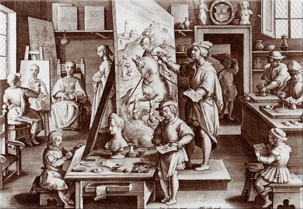
Jan van der Straet (Stradanus) (Dutch, 1523-1604),
Painter's
Studio, woodcut.
As the master paints a large
canvas with
a picture of St. George
and the Dragon at the center, an apprentice
paints a portrait from a model at left, two make drawings and one mixes colors in the foreground,
two more grind pigments into
oil on the right, and a last
one carries a canvas toward the doorway. See studio.
Also see abrasion, disc grinder, hazardous, mortar and pestle, pigment, sand, and triturate.
grog - Clay which has been fired and ground into fine granules, used as an ingredient in a clay body or as a base on which clay is worked or fired which allows the form to contract freely as it dries. It may also be used for molds and cores and for objects cast and modeled. When added to clay it raises its firing temperature and makes it more stable, but it can also alter its appearance. Sometimes sand is used as a substitute. Also see investment and pyrometer.
groin - The edge formed by the intersection of two vaults.
groin vault - A vault formed when two barrel vaults meet at right angles. Groin vaults were used by Roman builders in the construction of the central hall of the Baths of Caracalia.
gross motor - Larger movements of the body. Large motor skills typically develop at a certain pace in childhood, preceding and alongside the development of fine motor skills.
grotesque - Something having a fantastically distorted appearance. Also, a style of painting, sculpture, and ornamentation used in antiquity in which natural forms and distorted figures are intertwined in bizarre or fanciful combinations, consisting of representations of medallions, sphinxes, foliage, and imaginary creatures.
The grotesque is a powerful aesthetic category that combines ugliness and ornament, the bizarre and the ridiculous, the excessive and the unreal. The term derives from grotteschi, the Italian term for grottos — the ruins in which ornamental statues of monstrous figures were found in the 15th and 16th centuries. In the realm of the fantastic, the grotesque is a powerful weapon used in the revelation and denunciation of constructs. Interest in the grotesque lies at the heart of the the carnivalesque spirit — that tendency toward abandoning self-restraint seen in nearly every culture. The Romantic era, with its interest in individualism, and in all those who before the Age of Revolution had been nameless and invisible, made the grotesque its indispensable adjunct.
"Grotesque" is the term used by Mikhail Bakhtin (Russian linguist and literary philosopher, 1895-1975), to reference bodily changes through eating, evacuation, and sex, and is used as a measuring device (1993).
(pr. gro-TESK)
Examples of the grotesque in the first sense:
Roman, Vichy (Allier), 2nd century CE, Stooping Old Woman, bronze, height 9.2 cm, Louvre. Also see Roman art.

Leonardo
da Vinci (Italian, 1452-1519), Five grotesque heads, drawing on paper,
Royal Library, Windsor, UK. These are just a few of the numerous
very realistic pictures Leonardo produced of grotesque or monstrous
human heads, known in Italian as "visi monstruosi."
See Renaissance.
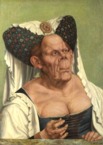
Quentin Massys (or Matsys or Metsys) (Netherlandisch,
1465-1530), A Grotesque Old Woman, c. 1525-30, oil on oak panel,
64.2 x 45.4 cm, National Gallery, London. This may have been
based on a drawing by Leonardo da Vinci. "It was probably
intended to satirize old women
who try inappropriately to recreate their youth, rather than
as a portrait
of a specific person."
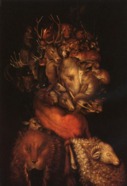
Giuseppe
Arcimboldo (Italian, 1527-1593), Grotesque Head, oil.
Italy, Florence, second half of the 16th century, Gnome on a Snail, bronze with black and brown cracklework patina, 0.375 x 0.195 m, Louvre.
Jacques Callot (French, 1592-1635), The Temptation of St. Anthony, 1630, etching on paper, 45 x 67 cm, Hermitage Museum, St. Petersburg, Russia.

Francisco
de Goya y Lucientes (Spanish, 1746-1828), Saturn Devouring one of his Sons, mural transferred to canvas,
(146 x 83 cm), Prado Museum, Madrid. Also see etching, expression, Romanticism,
and Spanish art.
Ivan Le Lorraine Albright (American, 1897-1983), Self-Portrait in Georgia, 1967, 1967-68, oil on panel, 20 x 16 inches (50.80 x 40.64 cm), Butler Institute of American Art, Youngstown, OH. See self-portrait.

Anonymous, Ugly Guy, c. 2000, digital
image, a pastiche of
features from various photographic
sources. See portrait
and ugly.

Peter
Jackson (New Zealander, 1961-) directing a team of designers,
Gollum,
a character in the motion picture trilogy The Lord of the
Rings, 2001-2003, New Line Cinema. The cinematic Gollum is
a digitally produced animated
figure, based upon
the description in the books
by J.R.R. Tolkien and acting by Andy Serkis. There have been
numerous grotesque characters in literature and theatrical productions.
Unlike the monsters in most "horror" stories, in this
epic tale, Gollum is a tragic character for whom a viewer's dislike
is often overtaken by pity. See cinema
and wireframe.
Quote
Reference
Also see arabesque, frisson, gargoyle, Gothic, Middle Ages, misericord, pain, and ugly.
ground - A surface to which paint is applied, or the material used to create that surface. A painting's ground is usually specially prepared on its support. Traditionally, for oil paint on canvas use a ground of oil and white pigment, and on wood surfaces either an oil ground or gesso.

Within a picture, ground may refer to a surrounding or background area. Also, in etching, it's an acid-resistent compound through which a design is drawn.
Other sites concerned with grounds:
Groupe du Bateau-lavoir - See Bateau-lavoir,
Groupe du.
Group of Seven - See Seven, Group of.
grout - A paste cement or mortar used for filling and sealing gaps — cracks, crevices and joints — especially between tiles. (pr. grahwt)
guilloche - A patterned ornament consisting of interlaced, curving bands. (pr. gee-OHSH)
Example:

American, Nocera Art Tile Company, Tile,
relief glazed
ceramic with
a guilloche pattern
inset with rondels, 2002.
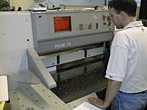
guillotine - A mechanical cutting apparatus with a heavy movable blade, worked by a lever or foot pedal. A guillotine is a tool designed to produce quick, easy, and straight cuts through paper, sheet metal, and some other materials.
![]() Be careful! If this device reminds you
of the French Revolution, there's good reason: People have lost
body parts from the use of guillotines!
Be careful! If this device reminds you
of the French Revolution, there's good reason: People have lost
body parts from the use of guillotines!
(pr. GEE-əh-TEEN) Also see scissors and technology.
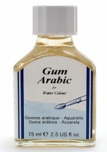
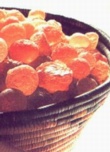
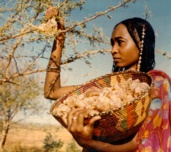
gum arabic or gum acacia - Hardened sap secreted by acacia trees, used in solution as a medium, vehicle, or binder for water-soluble pigments. Also used in adhesives, and, although it is slightly acidic, it is an ingredient in ice creams and candies. With much of it originating in the Sudan, gum arabic is so valuable that control of it has sometimes been violently contested. Also see base, resin, and watercolor.
gymnophobia, gymnophobe - Derived from Greek words for naked, gymnos, and fear, phobos, gymnophobia is a fear or anxiety about either being seen naked or seeing others naked, whether entirely or in part, even in situations where it is culturally acceptable.
In another sense, particularly relevant to visual culture, gymnophobia is irrational worry about viewing representation of a nude figure. As such it is a type of iconophobia.
A sufferer — known as a gymnophobe — experiences undue anxiety whether or not s/he realizes a fear of nakedness is irrational. This phobia often arises from feeling that one's body fails to meet some aesthetic standard, such as might be formed by comparisons to idealized figures seen in popular or mass media. This perception of physical inadequacy may also stem from anxiety about sexuality in general, or from a feeling of vulnerability resulting partly from exposure of one's body, one's nakedness, because it leaves a person's body — and personality — unprotected, and others would still visualize that person naked.
Cultures establish norms concerning modesty — social expectations about covering / exposing the human body. Unfortunately gymnophobia might be among the components shaping such norms. When strictures regarding modesty become unreasonable, their typical expression is prudery and censorship. Several other pathologies are associated with or can be compared to gymnophobia. Consider all sorts of xenophobias for instance. (pr. JIM-nə-FOH-bee-əh)
In the news:
In April of 2006, Sydney McGee, an elementary art teacher at Wilma Fisher Elementary School (in the Dallas, TX, exurb of Frisco), led fifth graders (11 and 12 years old) through European and contemporary galleries of the Dallas Museum of Art. One of her students saw nude art in the museum, and after the child’s parent complained, Ms McGee was suspended. Although the tour had been approved by the principal, and the 89 students were accompanied by four other teachers, at least twelve parents and a museum docent, Principal Nancy Lawson reprimanded Ms. McGee, saying: “During a study trip that you planned for fifth graders, students were exposed to nude statues and other nude art representations.” Although school representatives have said that other concerns prompted Ms McGee's dismissal, the evidence betrays this school community's gymnophobia. See a NY Times article about this story.
An important goal of education (as it is of art) is to challenge students to consider more advanced ideas. In doing so, viewers must see images that some might consider problematic. Approaching the examination of disturbing subjects, educators are wise to gauge community concerns, and to accomodate them in some ways. Nevertheless, it is generally appropriate to expect that maturing students can and should view many challenging works in a scholarly manner, and that their scholarly pursuits are not be impeded by gymnophobia.
Also see beauty, cosmetic, costume, ethnocentrism, fashion, feminism, fig leaf, First Amendment rights, gaze, gender issues, iconoclast, iconomachy, iconophobia, iconophobiac, iconophobic, lookism, obscene, pornography, sensuality, sybaritic, and voyeurism.
gyo - In Japanese tradition, a mark or impression. In calligraphy, gyo is an abbreviated brushstroke. Also see gyotaku, shin, and so.
gyotaku - In Japanese
tradition, a relief
print made from an actual fish, and sometimes from a shell,
leaf, or other object from
nature — inked and placed on paper
or cloth. In Japanese, gyo means
impression, and taku means
fish. This is a relatively 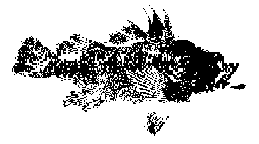 new technique. The oldest known
prints were commissioned in
1862 by Lord Sakai in the Yamagata Prefecture to preserve the
memory of a record catch. Ever since,
gyotaku has been employed as a way for Japanese sport fishermen
to record the exact size and
species of fish they've caught. The original
kind of gyotaku involves applying black ink directly to a fish, and making
an impression on thin rice
paper or cloth. This creates an image with bold contrasts
and powerful lines. Such gyotaku
are commonly exhibited on
the walls of homes, or kept in journals to document
fishing achievements, much as western fishermen display photographs and taxidermy.
When Japanese fishing organizations hold contests for the largest
fish caught, they typically judge gyotaku to determine winners.
new technique. The oldest known
prints were commissioned in
1862 by Lord Sakai in the Yamagata Prefecture to preserve the
memory of a record catch. Ever since,
gyotaku has been employed as a way for Japanese sport fishermen
to record the exact size and
species of fish they've caught. The original
kind of gyotaku involves applying black ink directly to a fish, and making
an impression on thin rice
paper or cloth. This creates an image with bold contrasts
and powerful lines. Such gyotaku
are commonly exhibited on
the walls of homes, or kept in journals to document
fishing achievements, much as western fishermen display photographs and taxidermy.
When Japanese fishing organizations hold contests for the largest
fish caught, they typically judge gyotaku to determine winners.
As gyotaku attained popularity
among sportsmen, it also developed as a form of fine
art. The earliest production of finely polychromed
works has been credited to a master named Inada in the early 1950s.
Such advanced works involve the use of small wads of cotton wrapped
in 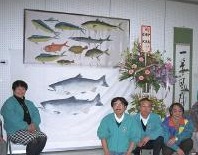 silk (tanpo
in Japanese) to dab watercolors
onto a fish, before impressing it onto paper. Another innovation has been an "indirect" printing technique wherein colors are dabbed onto rice paper which is pressed onto the fish. Sometimes a brush is used to draw
in the eye. Such refined methods make it possible to produce sharply
defined shapes and lines, along
with subtle layering of colors, and graded
tones.
silk (tanpo
in Japanese) to dab watercolors
onto a fish, before impressing it onto paper. Another innovation has been an "indirect" printing technique wherein colors are dabbed onto rice paper which is pressed onto the fish. Sometimes a brush is used to draw
in the eye. Such refined methods make it possible to produce sharply
defined shapes and lines, along
with subtle layering of colors, and graded
tones.
Here are some artists participating in the
8th Annual Color Gyotaku Exhibition held by the International
Gyotaku Studio in 2001, along with some of their work.
Children (and their teachers) might prefer to produce gyotaku using rubber forms cast directly from fish. These are available from art supply dealers. (pr. gə-yo-tah-koo)
Examples:

Japanese, Gyotaku, some of the text surrounding
the impression: "54 cm" and "2.2 kg" — the
length and weight
of the catch.

Japanese, Gyotaku, some of the text surrounding
the impression: "45.5 cm" and 2.0 kg."
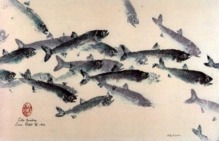
Lori Hatch (American), Coho Yearlings, 1996, gyotaku. By controlling
the value and placement
of each impression, the artist
has achieved a striking illusion
of depth and movement.

Boshu Nagase (Japanese,contemporary), Gyotaku,
1998, Australian Institute of Marine Science.
Also see animalia, bestiary, equestrian art, equine art, frottage, and gyo.
gypsum - Calcium sulfate dihydrate, found in a variety of forms as natural deposits (such as alabaster), which when heated and deprived of its moisture forms the substance known as plaster of Paris. Gypsum rates an index of 2 on Mohs Scale of Hardness. (pr. JIP-səm)
Examples of objects carved from blocks of gypsum:
Levant, Jericho, Small Vessel with Banded Neck Decoration (from Tomb J42), c. 1800-1550 BCE, gypsum, 3 1/8 x 2 3/8 inches (7.8 x 6 cm), Michael C. Carlos Museum, Emery U, Atlanta, GA. See vessel.
https://inform.quest/_art